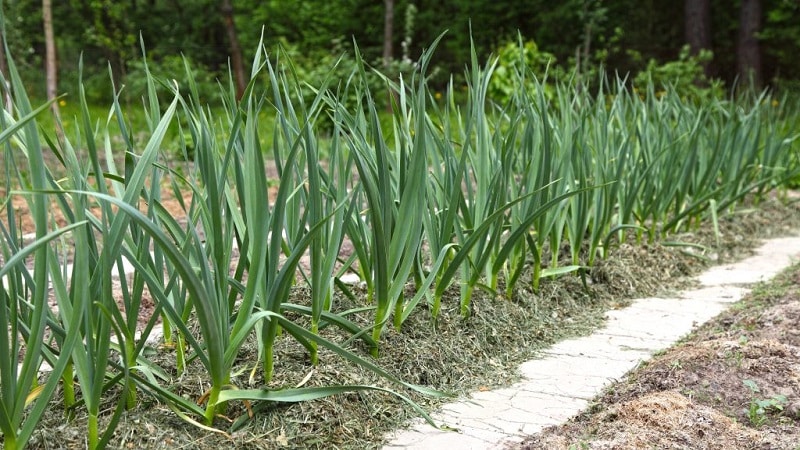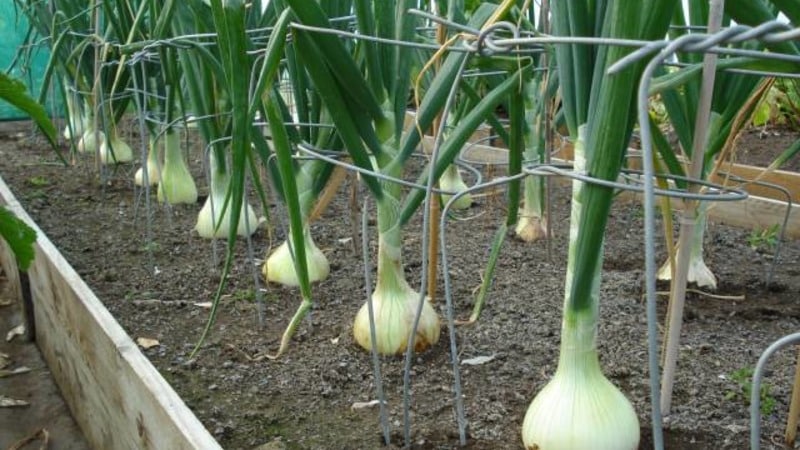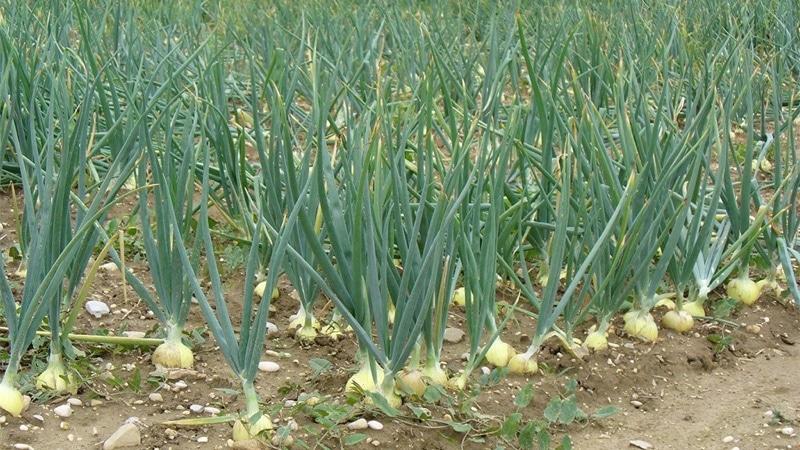Onions and garlic in the same bed: is it possible to plant them together?
Onions and garlic are one of the main vegetable crops in any garden. They are used in the preparation of many dishes, as they are incredibly beneficial for the human body. These plants are easy to care for and do not require much effort to produce good harvests.
Many beginning gardeners ask questions: is it possible to plant onions next to garlic, how to do it correctly in a small area, and what conditions must be observed? Let's look at the rules of crop rotation and find out the answers to all the questions.
Features of crops and their soil requirements

Onion It develops well and produces high yields on fertile soils. But it also grows on neutral and poor soils if fertilizers are applied in a timely manner. Given the shallow root system of the plant, the bulk of the nutrients should be in the top layer of soil.
The best options are alluvial or silt-clay soil with a sufficient amount of sand, as well as floodplain (moderately moist). It is recommended to plant onions in acidic soil only after liming to avoid downy mildew.
Onions are also picky about soil moisture. Lack of moisture affects the size of the bulbs, and excess moisture creates a favorable environment for the development of various onion diseases.
Reference. Poor soils are also used for growing onions. You shouldn’t count on a harvest with large heads, but you will have fresh greens throughout the season.
Garlic, like onions, does not develop well in shady, waterlogged and heavily manured soils. The best option for it is considered to be light, sandy loam soil. It is recommended to add sand or expanded clay into clay soil as drainage. For garlic, it is preferable to add peat or humus, and it is better to refuse fresh organic matter.
Why is it so important to choose the right neighborhood?

Any plant in the garden feeds on nutrients, affecting the composition of the soil. Only the level of nutrient requirements is different for all crops. This factor is taken into account when planning vegetable, berry and green plantings.
Every culture needs a friendly neighbor who will not oppress, but stimulate its growth. They must have the same requirements for salt content and moisture and assist each other in the fight against diseases and pests.
If crops planted in the neighborhood need the same substances, competition for survival will arise between them. In this case, soil depletion will occur at an accelerated rate. There is a risk that both plants will not receive the necessary nutrients.
The relatedness of cultures also poses a danger. Susceptible to the same diseases, they can infect each other. The result will be weak plants, small fruits and non-viable seeds.
Is it possible to plant onions and garlic side by side in the same bed?
Garlic and onions are very similar. For example, they love loose, moderately fertilized soil, but do not do well on dense, swampy soil. Their shallow root system feeds on moisture and substances from the top layer of soil. They have approximately the same ripening time and sowing time, so the decision to plant them nearby seems logical.
But keep in mind that both cultures belong to the Liliaceae family and are prone to the same diseases. It turns out that they are not able to provide each other with protection. Both garlic and onions prefer well-lit areas. There is a risk that grown plants will block access to sunlight. And the nutrition from one soil layer will quickly become scarce, and there will not be enough for both plants.
Important! When planting garlic and onions together, consider their need for good lighting. To avoid creating shading, maintain a distance between rows of at least 15 cm.
Early spring is suitable for planting spring varieties of garlic and onions.
The work is carried out using the following technology:
- soil disinfection - watering with a weak solution of copper sulfate or potassium permanganate;
- thorough loosening of the beds;
- planting in shallow holes no more than 3 cm.
In the fall, before the first frost, they plant winter crops onion varieties and garlic.
To get a decent harvest, it is important to comply with the following conditions:
- place the beds in areas protected from flooding;
- add potassium-phosphorus fertilizers to the soil;
- To prevent freezing, cover the beds with fallen leaves or spruce branches.
Is it possible to plant garlic after onions and how to do it correctly

If you have a great desire to experiment, then you can. But don’t expect a rich harvest or strong plants. Onions take all the nutrients from the top layer of soil. The garlic will be left without the necessary nutrition and will not develop normally.
Attention! To ensure adequate nutrition, garlic is planted only in beds where vegetables with a long root system previously grew.
In addition, these crops are susceptible to the same diseases and pests. The soil after onions may be contaminated.Therefore, only plants resistant to onion diseases are planted in this bed. Good predecessors of garlic are potatoes, beets, tomatoes, and cucumbers.
Is it possible to plant onions after garlic?
For the same reasons, you cannot plant onions after garlic for the next 3-4 years. It is recommended to plant in beds that were occupied last season by cabbage, potatoes, radishes, cucumbers, and zucchini. These are crops that are usually fed with large doses of organic matter.
For gardeners whose plots do not allow them to follow all the rules of crop rotation, there is a way out. This method does not guarantee a good harvest, but it will definitely provide a minimal improvement in soil composition:
- To begin with, winter garlic is planted.
- In the summer, after the harvest, the bed is sown with green manure - vetch, clover, alfalfa.
- In the fall, the dug up beds are again sown with green manure.
- And only in early spring are spring onions planted.
What crops do onions and garlic combine with in the same garden?
The best neighbors of garlic are:
- Strawberry wild-strawberry;
- potato;
- tomatoes;
- cucumbers;
- beans;
- flowers - gladioli, asters, roses, tulips;
- raspberries.
Garlic secretes phytoncides that inhibit the growth of pathogenic bacteria. Therefore, it is considered an excellent helper for many crops, protecting them from fungal diseases.
Onions feel great next to the following plants:
- tomatoes;
- radishes;
- parsley;
- salad;
- strawberries.
The joint planting of onions and carrots deserves special attention. These plants protect each other from carrot and onion flies.
Advice from experienced gardeners
According to crop rotation rules, onions and garlic are considered incompatible. But many gardeners manage to get good yields when placing these crops in neighboring beds. What do experienced farmers advise:
- If you have a spacious area, do not take risks, but plant the plants separately.
- If space is limited, plant garlic and onions together, but choose an open, well-lit place, leaving 20-25 cm between rows.
Conclusion
To get a good harvest, it is not recommended to plant garlic in the same bed with onions. They need the same nutrients, which is not enough for the development of both. In addition, they have common diseases. Try to place them at least in adjacent beds. But if this condition cannot be met, plant onions and garlic on pre-fertilized soil, maintaining sufficient distance between the rows.